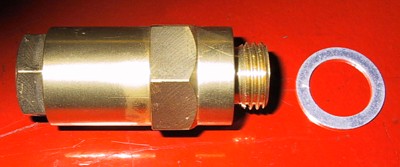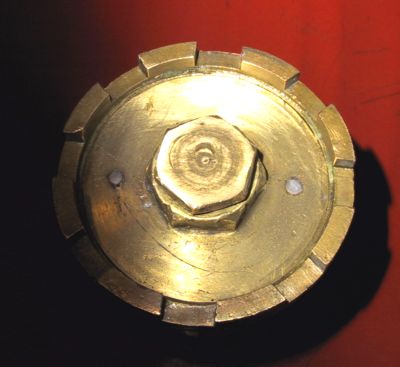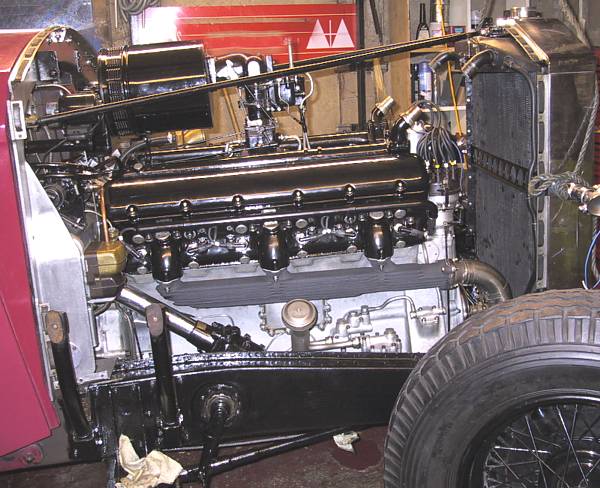



After timing the ignition the radiator was temporarily installed. The water pipes were attached to the engine which was then filled with a weak solution of antifreeze and hot water - no leaks evident.
The ignition was switched on and the fuel pumps primed the carburettor - no leaks evident.
The starter button was press and after about one revolution the engine fired but did not start. The hand throttle was opened slightly and a second attempt produced the same result.
With slightly more hand throttle applied the engine fired immediately and settled to a steady tick-over of about 800rpm with maximum oil pressure.
There are three minor adjustments to be made before the bodywork is re-fitted:-
1) one banjo connection in the 'V' is leaking oil
2) one petrol pipe union is leaking
3) the clutch adjustment needs refining.